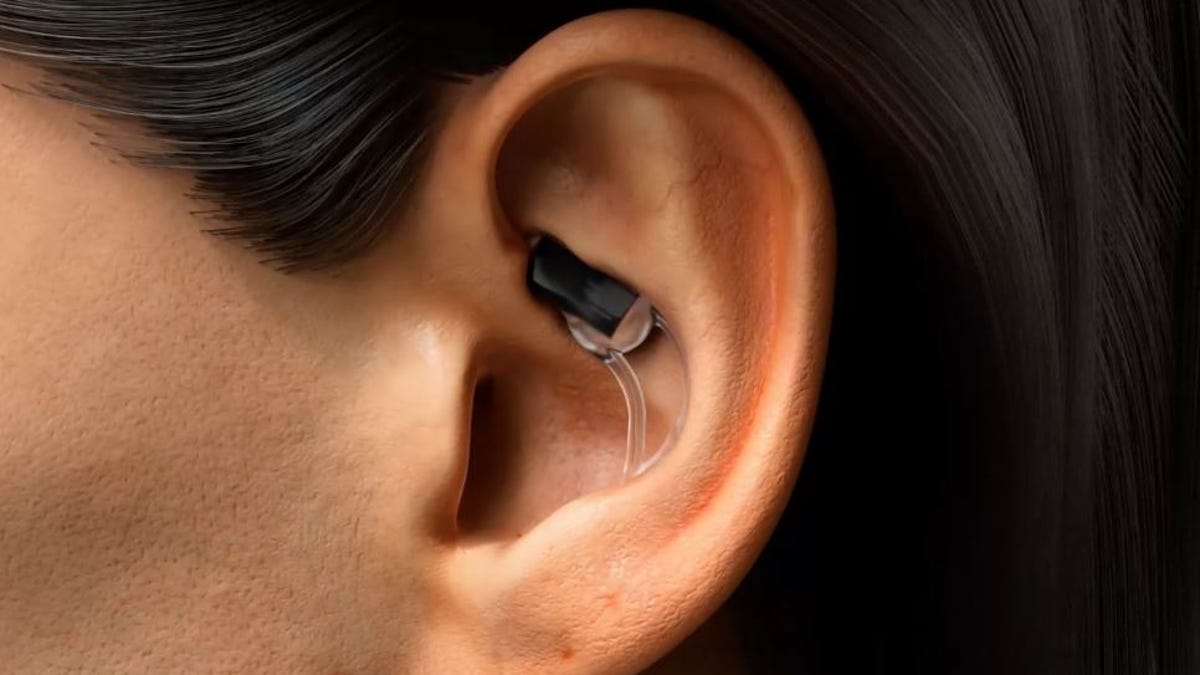New In-Ear Wearable Could Help People Who Always Feel Faint, Light-Headed
It’s official: The river of wearables and wellness-trackers has run all the way up to highest nook or cranny of your ear.
The new company STAT Health announced a device Tuesday that sits in your ear, above the canal, that measures blood flow to your head. Through metrics shared to an app, it may provide insight for people who feel faint on a regular basis, including those with long COVID, postural orthostatic tachycardia syndrome (POTS), chronic fatigue and others suffering from a form of dysautonomia, a disruption of the autonomic nervous system.
It may also help manage associated feelings or symptoms, like brain fog or headaches, by allowing them a peek into how blood flow to the head changes when they sit, stand or walk around.
The wearable, called the STAT, is designed to be worn 24/7, and because it sits above the ear canal, shouldn’t interfere with headphones or ear buds. While it’s not officially on the market yet, and is not a medical or diagnostic device, it may be a useful tool for the millions of people managing symptoms of a disregulated autonomic nervous system, some cardiovascular issues and more.
“Cerebral blood flow (CBF) is the critical missing vital sign — poor CBF is the cause of common orthostatic symptoms such as dizziness and brain fog,” Dr. Peter Rowe, a professor at Johns Hopkins School of Medicine who specializes in chronic fatigue and similar disorders, said in STAT’s press release. The STAT earpiece was clinically tested at Johns Hopkins.
“However, it’s not easy to measure CBF, so most clinics approximate using secondary metrics of Heart Rate and Blood Pressure, which often mislead,” Rowe said.
The device doesn’t fit in your ear canal, as seen in this person who’s wearing both an ear phone and the STAT.
How it works
STAT Health was co-founded by Daniel Lee, one of the original creators of the Bose Sleep Buds. He said he got the idea for the new device, aptly called the STAT, after his dad started fainting from cardiovascular issues — he wanted to help those like him find a tool that can help predict a fainting spell.
But after Lee observed researchers at Johns Hopkins conducting the “tilt table test,” a diagnostic test for people with conditions that affect blow flow, he saw a need in a different group, mostly younger women, who may have less need for an “alert” about when they’re going to faint but are eager to get back to their day-to-day life without feeling too light-headed.
But the pandemic and the prevalence of long COVID may’ve “exploded” the pool of people who could benefit from a device like STAT, Lee said. While there are a plethora of symptoms and causes of long COVID, some of the most common ones are shortness of breath, fatigue, brain fog and other symptoms that may be linked to a disruption in blood flow.
“We’re not technically measuring cerebral blood flow or blood flow to the brain,” Lee said. “We’re measuring blood flow to the head, which in many circumstances is reflected in the ear.” Specifically, the STAT measures blood coming through the external carotid artery, which runs blood up to the neck, face and head.
But people who chronically feel light-headed, dizzy or unwell being upright for too long may fall into a cycle of laying too much, which will further disrupt blood flow from the heart to the brain, Lee said. STAT will be able to tell you how much blood flow you’re getting, when you can take it easy and when it may be okay to move around.
Users will get scores of that blood flow, both “up” scores or “flow” scores, delivered to an app you’d open on your phone. You get a varying number of “up” points when you’re walking, standing or sitting. Your overall flow score reflects metrics like your heart rate and trends in blood pressure (not an actual mmHg reading) when you’re sitting, standing and walking.
Then, similar to other wearable devices like the Apple Watch or Oura ring, you’ll be able to tweak your activity level or lifestyle, or even share those metrics with your doctor. The STAT incorporates different sensors, including pressure and temperature sensors. It also has a micro solar panel as one charging option.
Read more: Oura Ring: Life With a Wearable That Knows When I’m Sick
When you can get a STAT
For people who the device is made for (i.e. people who feel light-headed or have related issues) you can sign up to get one through STAT’s website for a chance to get the devices in best testing, likely rolling out early next year. There’s no firm date on a final release data yet, Lee said, but that could happen around the second or third quarter of next year.
However, if you want one just to add to your wearable collection, you shouldn’t add your name to the list as you probably won’t get through the company’s screener questions.
“There are gonna be people who love technology and want the cool wearable, but we don’t want them,” Lee joked. “We want to help the people who need it.”
For all the latest world News Click Here

